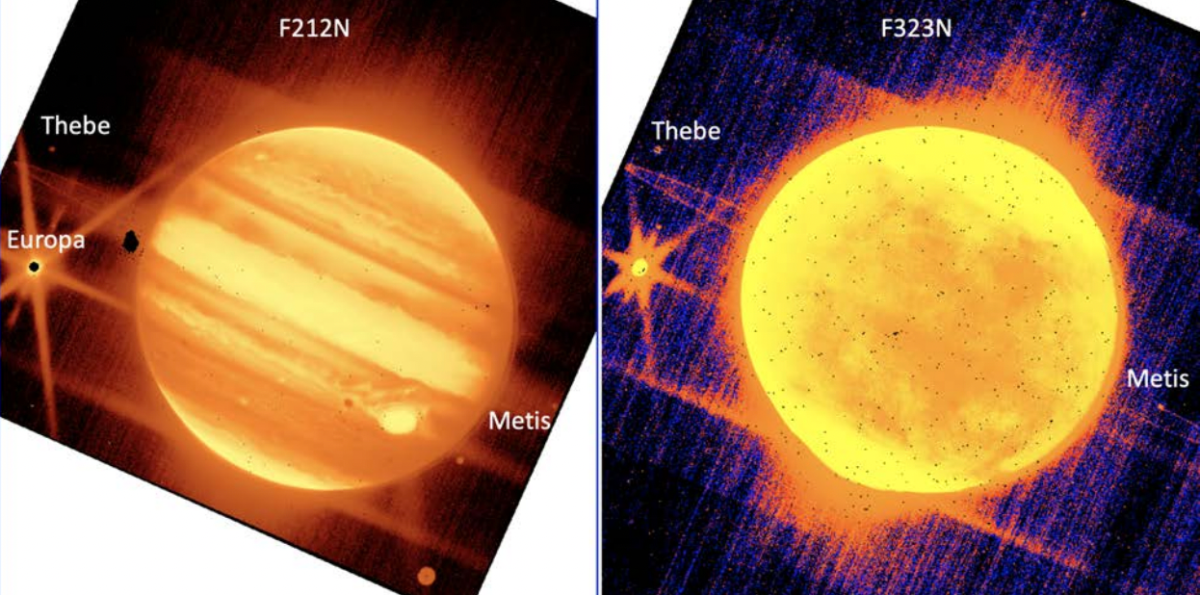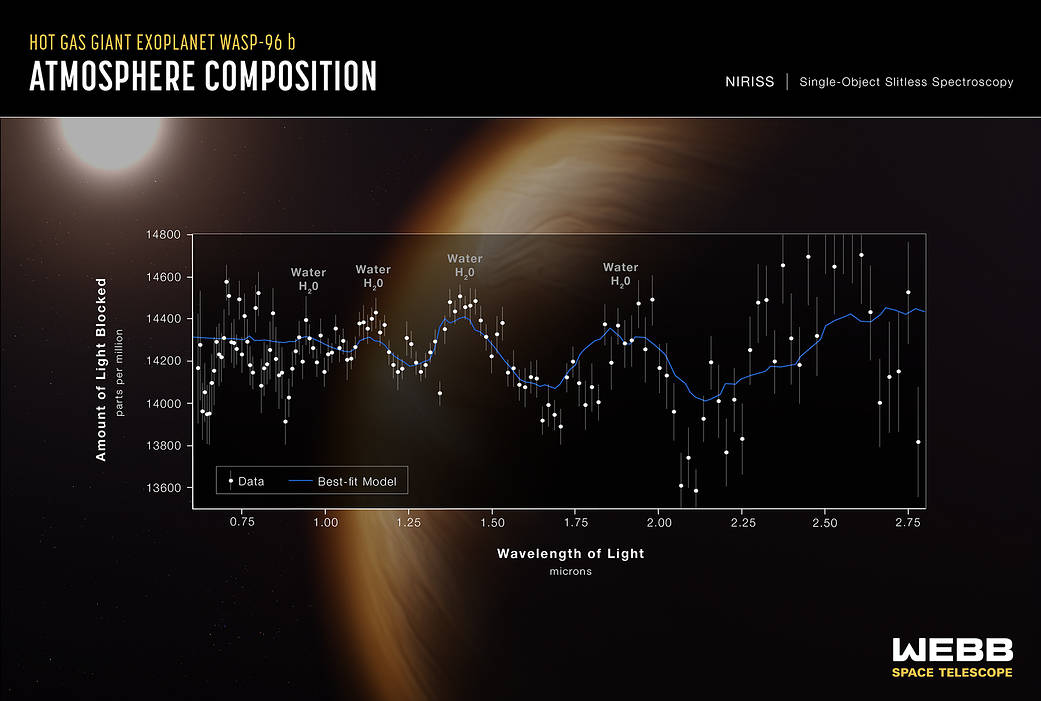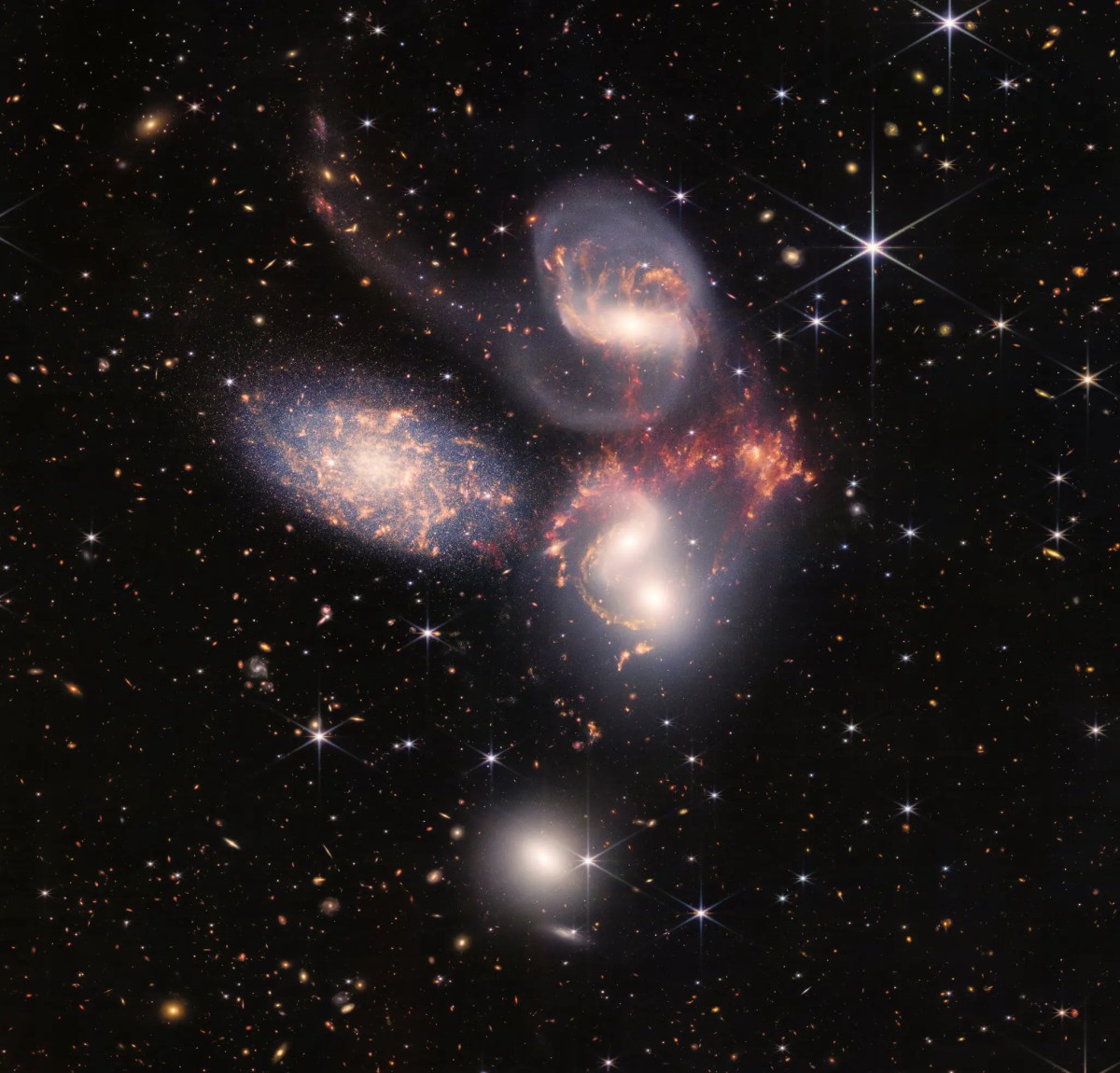While the world was in awe of the James Webb Space Telescope‘s (JWST) phenomenal, high-quality photo set of the universe, NASA also quietly released two new images of the planet Jupiter.

The photos, though not the same as the formal, full-resolution images that debuted Tuesday morning, are still incredibly striking.
The composite was released as part of a commissioning document outlining the Webb telescope’s ability to use a NIRCam (near infrared camera) to track moving objects.
The photos were taken during a test of the telescope, the NASA report says.
The composite shows two different wavelength measurements, a short-length image on the left and a long-length image on the right. According to NASA’s document, this displays the vastly different atmospheric conditions present on Jupiter, and by proxy, the JWST’s incredible ability to capture them.
Three of the gas giant’s moons can be seen in the image: Europa, Thebe and Metis. The planet has a whopping 79 moons in total.
Jupiter’s Great Red Spot, an area of ongoing high pressure that NASA calls a “gigantic storm,” is also visible in the new photos.
“Observing a bright planet and its satellites and rings was expected to be challenging, due to scattered light that may affect the science instrument employed, but also the fine guidance sensor must track guide stars near the bright planet,” NASA wrote in the commissioning report.
With this impressive ability, the JWST can now also be used to track near-Earth space objects and comets, NASA says.
All in all, the commissioning report proved that the JWST is performing well beyond what was anticipated, and the photos captured are the breathtaking proof.
“The key outcome of six months of commissioning is this: JWST is fully capable of achieving the discoveries for which it was built. JWST was envisioned ‘to enable fundamental breakthroughs in our understanding of the formation and evolution of galaxies, stars, and planetary systems,'” the report concludes.
Heidi B. Hammel, a planetary astronomer working on the JWST project, took to Twitter to share her excitement about the new images of Jupiter.

Get breaking National news
“It’ll only get better from here, so buckle up!” Hammel tweeted.
On Tuesday morning, U.S. President Joe Biden had the honour of unveiling the first full-colour photograph captured by the US$10-billion telescope.
The images include a view of a giant gaseous planet outside our solar system, two images of a nebula where stars are born and die in spectacular beauty, and an update of a classic image of five tightly clustered galaxies that dance around each other.
The first photo revealed shows a very hot, gaseous exoplanet named WASP-96b. The planet, which is approximately 1,000 light years away from Earth, is not in our solar system. The JWST captured the distinct signature of water in its atmosphere, along with evidence of clouds and haze surrounding the puffy gas planet orbiting a distant Sun-like star.
The second image revealed shows a planetary nebula – a.k.a. the death of a star.
It’s known as the Southern Ring Nebula and shows when the star spewed its own atmosphere into space “like an expanding soap bubble.” The only part of the star left behind was a scalding-hot core known as a white dwarf, in the centre of the image.
According to NASA, the image was captured approximately 2,500 light-years away.
Stephan’s Quintet, a cluster of compact galaxies, is shown in the third image. Two galaxies are so close that they are merging into one in the image.
NASA says the photograph provides new insights into how galactic interactions may have driven galaxy evolution in the early universe.
The final image presented Tuesday — and perhaps the most stunning of all — shows the Carina Nebula in all its glory.
The sparkly picture shows the birth of a star, with what look like mountains and valleys of the Cosmic Cliffs on full display. An image like this has never been seen before, depicting the edge of a giant, gaseous cavity within the star formation, caused by the intense ultraviolet radiation and stellar winds. The winds are caused by extremely massive, hot, young stars located in the centre of the bubble, above the area shown in this image.
Select photos were also revealed on Monday, including a “deep field” image, filled with stars and massive galaxies in the foreground. The stars in the image are distorting the light of the objects behind, telescoping them to make faint and extremely distant galaxies visible.
Prior to the JWST, the Hubble Space Telescope was responsible for providing the rare, stunning images of the vast unknown universe.
The JWST has a much larger primary mirror than Hubble (2.7 times larger in diameter, or about six times larger in area), giving it more light-gathering power and greatly improved sensitivity over the Hubble.
— with files from Global News’ Michelle Butterfield.
















Comments